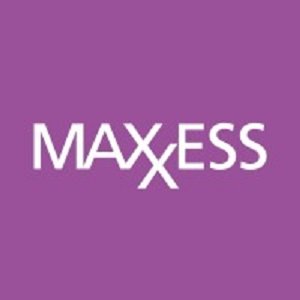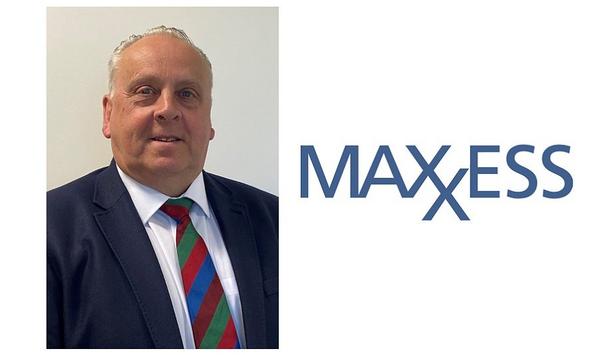MAXXESS Systems, Inc - Experts & Thought Leaders
White papers from MAXXESS Systems, Inc
Combining systems intelligence and human insight for superior security
DownloadLatest MAXXESS Systems, Inc news & announcements
Maxxess has extended the ecosystem of integrations available with its eFusion security management platform, with the addition of Digifort’s range of Video Management Software (VMS) options. eFusion, used globally in corporate enterprise, industrial settings, the hospitality sector and mixed-use developments, is a feature-rich platform that allows seamless off-the-shelf integration of access control with more than 60 technologies. These include video surveillance and analytics, facial recognition, fire and building management systems, as well as site-specific applications and hardware. Transparent price structure eFusion’s modular building block approach and transparent price structure ensure affordability but give users a level of power and functionality previously only associated with more expensive, customised solutions. Seamless integration of previously siloed systems drives operational efficiency by removing the need for operators to continually switch between screens and interfaces, allowing them to focus on priority tasks rather than having to juggle disparate technologies. With this latest integration, eFusion users can take advantage of the flexible suite of VMS options from Digifort, including DGF Professional, offering unlimited connections and up to 16 user profiles and DGF Enterprise, recommended for medium and large users who need unlimited tools and functionality including any number of cameras. Addition of Digifort We are continuing to strip-out the complexity from the multiple systems “With the addition of Digifort VMS to eFusion’s ecosystem of off-the-shelf integrations, we are making it even easier for customers to mix-and-match world leading security and safety brands and business-critical technologies,” says Lee Copland, Managing Director EMEA, Maxxess. “And most importantly, we are continuing to strip-out the complexity from the multiple systems that need to be managed.” Integrate video surveillance “The ability to seamlessly integrate video surveillance systems into wider security, safety and building management solutions is increasingly important for users,” says Tooma Chong, Director, Digifort Global, “Sometimes the strongest solution comes from not one system, but two distinct technologies working together as one. So, it’s great news that Digifort VMS solutions can now be easily adopted by Maxxess customers.”
Maxxess has added advanced facial recognition authentication to its eVisitor visitor management solution for access control, with off-the-shelf integration to RealNetworks’ industry-renowned SAFR technology. Maxxess eVisitor Maxxess’ eVisitor visitor management solution has established itself as one of the most flexible, secure visitor management solutions available, with frictionless and touchless access, removing many of the old inconveniences visitors, staff, and contractors encountered to access premises, workspaces, guest Wi-Fi and corporate networks, as well as facilitate hassle-free time and attendance. Now, with SAFR’s powerful facial recognition technology, organisations can ensure smoother and frictionless access, with the assurance of increased security across their estates. Using the same biometric authentication is also strengthening network security for home and hybrid workers. Maxxess eVisitor is used widely in commercial, hospitality, healthcare, universities, and mixed-use developments, with a range of edge devices such as facial readers, video intercoms and kiosks, allowing visitors to enter secure areas more easily without the need for old-style access cards or fobs. SAFR facial recognition SAFR facial recognition takes this convenience to a new level, providing powerful, biometric verification SAFR facial recognition takes this convenience to a new level, providing powerful, biometric verification. Built for privacy with AES-256 encryption and offline deployment options, organisations can choose for biometric data to be completely anonymised or allows visitors, staff, and contractors to set specific limits, on how long data is stored when they opt-in. This gives users privacy assurance and the flexibility to enroll as and when they need to access company workspace. SAFR can also be used to ensure that only authorised employees can access specific IT applications or view and work with sensitive data, including those working remotely or at home. If the authorised user moves away from their screen – or if another trigger event occurs, such as somebody shoulder surfing, or if a door to a corporate or home office is left open in the background – access can be set to immediately time out. SAFR – eVisitor integration SAFR integrated with eVisitor also detects any attempt to deceive the system using a photograph or digital image, and ensures an industry-renowned, high degree of authentication accuracy. These tools can be tailored to the security level per user. In the case of a bank or government department, for example, the access restrictions can be more rigorous, while smaller businesses where teams need to be agile can opt for greater operational flexibility. Automated watch lists Maxxess eVisitor also lets system managers specify which verification options are offered at each access point, depending on the risk-level and operational requirements of each location or area. When SAFR is integrated into the broader Maxxess eFusion security management platform, it also enables security operators to benefit from automated watch lists, by leveraging existing video surveillance solutions. Real-time alerts and notifications customisation By opting in staff and visitors, managers can customise real-time alerts and notifications for VIP guests By opting in staff and visitors, managers can customise real-time alerts and notifications for VIP guests, in order to improve customer experiences. It also allows security control room staff or security officers on patrol using smartphones or body cams to identify and respond to unauthorised people on-site or present in restricted areas, preventing security incidents and losses. SAFR supports organisations to better provide duty of care through safer and more secure workspaces that ensure the safety and well-being of staff. Ensuring safer and more secure workspaces Lee Copland, the Managing Director for Maxxess, said “With the addition of SAFR facial recognition, eVisitor makes it even faster and easier for visitors, staff, contractors, and temporary workers to get into the areas, where they are authorised to be.” He adds, “It also gives them secure access to the facilities and workspaces they need, from secure areas, storage, and meeting rooms, through to visitors accessing Wi-Fi, and staff and contractors being able to connect to corporate networks as needed. It also allows IT managers to enable bring your own device (BYOD) policies, while simultaneously supporting staff to benefit from flexible, hybrid working more securely.”
Access control and integrated security management vendor Maxxess has expanded its UK and Ireland operations with the appointment of Russell Baker as business development & account manager. Responsibilities Russell will be based out of the company’s European head office in Bracknell, UK, and will handle the substantial increase in demand for the firm’s signature solution, the eFusion™ access control, and security management platform. Building on the success of Maxxess solutions in the corporate, higher education, hospitality, and healthcare sectors, offering enterprise-class access control and integrated security, he will support existing partners and end-users and as well as developing new relationships with systems integrators, consultants and end-users across the UK and Europe. Work experience Russell has over two decades of experience spanning video surveillance, access control, intruder, and systems integration A familiar face in the security industry, Russell has over two decades of experience spanning video surveillance, access control, intruder and systems integration. He started his career at Chubb and went on to sales management roles with security systems integrators and tech vendors including Vicon and Zenitel Group. A longstanding member of the Association of Security Consultants (ASC), Russell has a proven track record in consulting roles as well as sales management. Feedback Lee Copland, Managing Director Maxxess EMEA, said, “We’re delighted to welcome Russell on board. He is well-positioned to leverage the increasing demand for cost-effective, integrated systems that drive operational efficiency by digitising processes and workflows.” “He will build on Maxxess’s existing installed base as well as helping many more organisations upgrade and digitise their infrastructures and bring new technologies on line.” Developing better access solutions Russell Baker commented, “With Maxxess eFusion and eVisitor enabling more affordable integrated site security and safety solutions, I am looking forward to working closely with consultants and systems integrators to develop project opportunities.” “These solutions are now very much in demand as customers look towards better access and people management solutions to support more flexible workplace operations post-pandemic.”
Insights & Opinions from thought leaders at MAXXESS Systems, Inc
Contact tracing has been more than a buzzword during the coronavirus pandemic. In some cases, it has been an issue of life and death. Tracking who an infected person has been in contact with is an important tool to minimise disease spread, and technology from the physical security industry claimed a role in contact tracing early on – and continues to provide benefits as companies seek to reopen. We asked this week’s Expert Panel Roundtable: How can the security industry enhance contact tracing?
The ultimate guide to mastering key control
DownloadUsing artificial intelligence (AI) to automate physical security systems
DownloadA modern guide to data loss prevention
Download7 proven solutions for law enforcement key control and asset management
DownloadThe truth behind 9 mobile access myths
Download





















